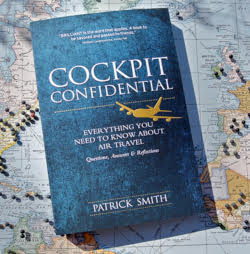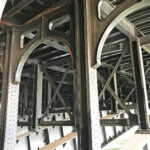February 27, 2021. Engine Failure.
Knock on wood, but in all my years of commercial flying, I’ve never experienced an engine failure.* Lord knows I’ve seen enough of them in simulators, but never one for real. I’ve been flying commercially since 1990, so that should give you an idea of how infrequently engines malfunction.
Should it ever happen to you, take comfort in knowing that all commercial planes are certified to fly with a dead engine. This includes the ability to climb away safely should a failure happen even at the moment of liftoff. Any engine failure is considered an emergency, but rarely if ever will it result in a crash.
When an engine does cease running, the process is usually undramatic. Passengers may not even notice. Other times, failures are accompanied by compressor stalls that result in loud bangs and even tongues of flame.
And then you have the kind in which the damn thing flies into pieces. This is the one we call an “uncontained” failure. Here, high-speed shrapnel from the engine’s internal fans, shafts or turbines, exits the cowling (the protective shell that surrounds the engine) and, in some instances, penetrates the wing or fuselage. Uncontained failures are rare, but they can be dangerous.
This was the misfortune that befell United Airlines flight 328 last Saturday. No doubt you’ve seen the cell phone footage, which, as these things go, enjoyed its fifteen (and then some) minutes of fame on YouTube and the major networks. I have to admit, the video is startling.
The engine involved was a derivative of the popular Pratt & Whitney series 4000 turbofan. It is believed that one or more of the engine’s forward fan blades, which in this particular variant are of an unusual, hollow construction, broke apart. The resulting imbalance destroyed the engine and tore the entire cowling off, leaving the powerplant’s innards scarily exposed to the full view of passengers (and, later, the rest of us).
This was at least the third similar incident, and the FAA quickly issued a so-called Airworthiness Directive, mandating inspections on all existing models of this engine. More than 120 Boeing 777s were grounded worldwide.
Although debris did penetrate the lower wing of flight 328, which was headed from Denver to Honolulu with 241 people aboard, there was no cabin breach or serious damage beyond the ripped-up engine itself. Nobody was hurt. The exciting visuals aside, getting the plane safely back to Denver would have been relatively easy for the crew. Planes maneuver quite well on one engine. While this was no ordinary day at the office, it was nothing they wouldn’t be expected to handle.
It could have been worse. In 2018, a passenger was killed after engine shrapnel took out a cabin window on a Southwest Airlines 737. In 1989, the center engine of United Airlines flight 232 disintegrated and knocked out all of the DC-10’s hydraulic systems, resulting in a crash at Sioux City, Iowa, that killed 112 people. The uncontained failure that struck a Qantas flight in 2010 nearly caused a worse disaster.
Such is the inherent danger when dealing with jet engines, which are essentially an interconnected series of fans and turbines rotating at tremendous speeds and tremendous temperatures. Fortunately, these same engines are astonishingly reliable and seldom do things like this happen.
* One day in 1999 I was the second officer on an old DC-8 freighter going from Cincinnati to Brussels. Just as we were “coasting out,” as it’s called — entering the oceanic portion of the flight — a light flickered on indicating a fire in engine number three (the DC-8 had four engines). When I say “flickered” I mean it literally. The light blinked on, blinked off, blinked on, blinked off. Nothing else was abnormal, and none of us believed there was actually a fire. Knowing this antique barge of a plane all too well, we suspected either the sensor was faulty or the bulb itself was on the fritz. We were later proved correct, but we had no choice but to shut down the engine and divert. You can’t simply ignore and engine fire warning and head out over the Atlantic. So we followed the checklist and secured the motor. Then we went to Bangor and had lobster rolls.
PASSENGER KILLED ABOARD SOUTHWEST FLIGHT




